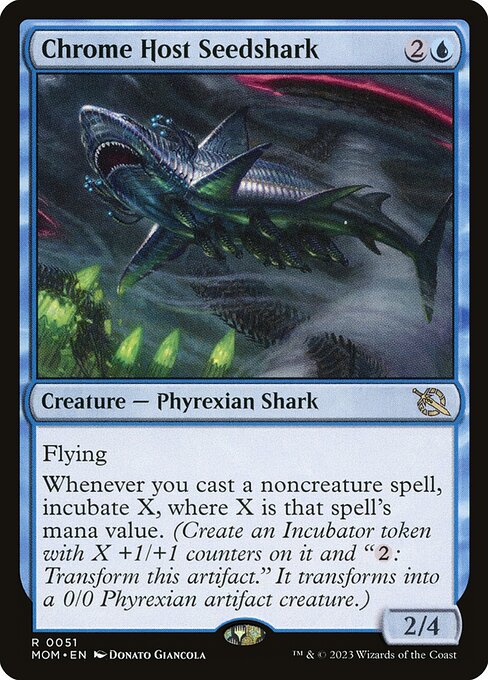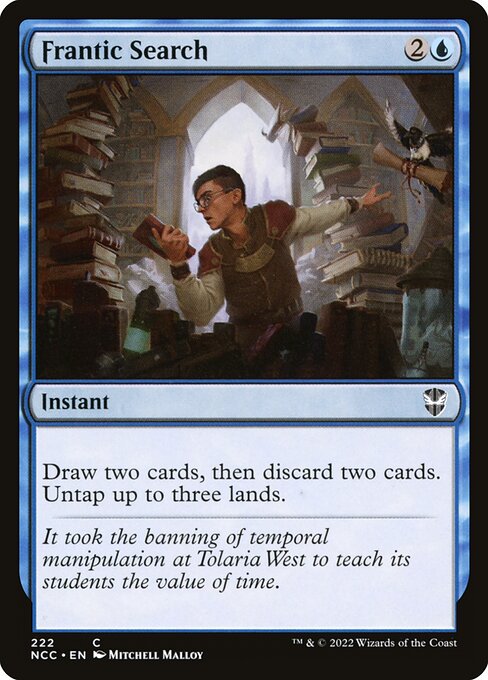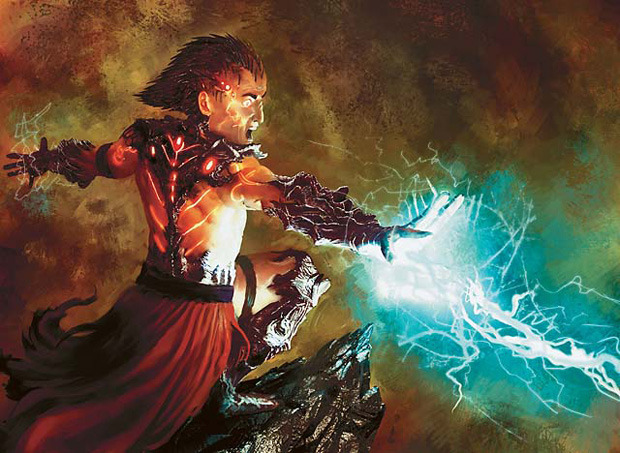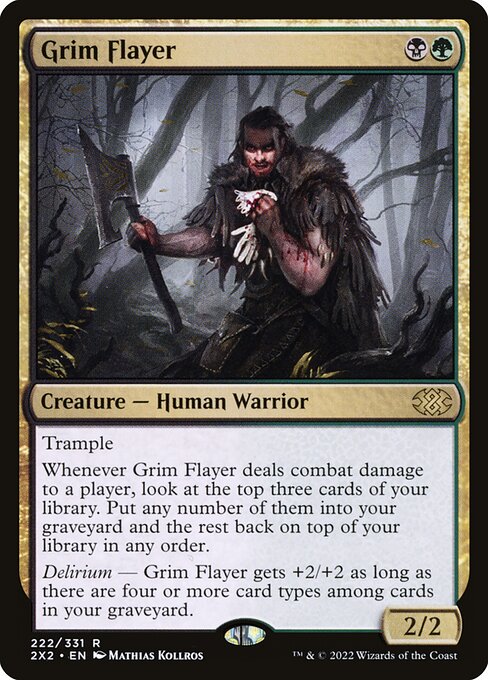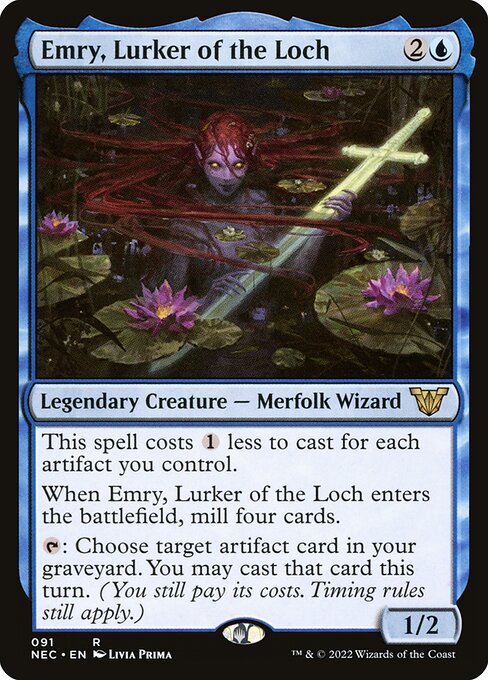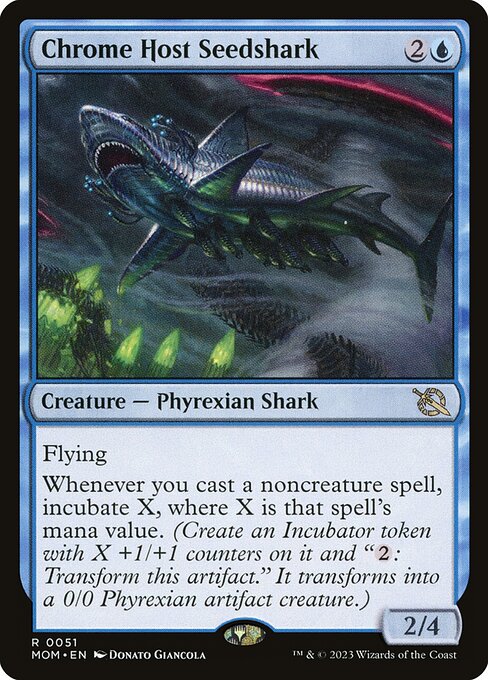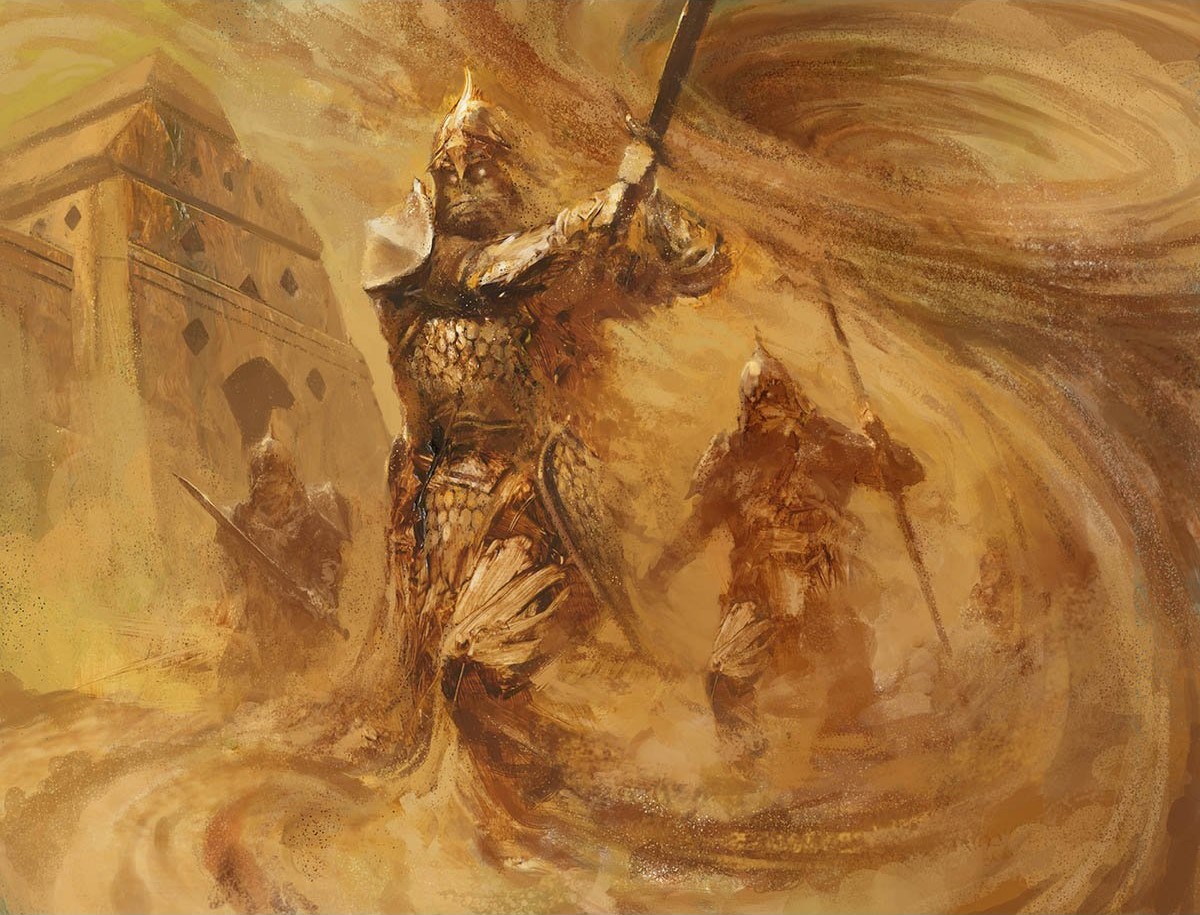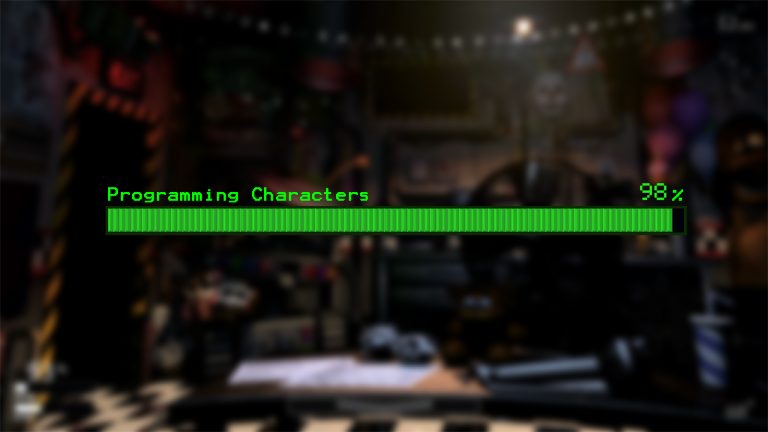Rallying the Ancestors Part 2
Welcome back! In the previous post, I discussed the overall vision for the Cube and how my main goals impact my design decisions. This post will outline the individual archetypes I'm trying to support in the Cube. I will also cover some archetypes that I have tried and removed in the past and some things that I wish to try in the future. Please note that I don't plan on discussing every possible deck in the Cube. While I will cover everything I am actively supporting, certain emergent decks aren't things that I am actively pushing. There are also archetypes that are subsets of other decks, such as the


control builds that are a sub-component of the



Dragon decks.
Control Decks


 Esper Dragons
Esper Dragons





Esper Dragons does a good job of illustrating what I meant when I said the inspiration for these decks are "quirky versions of core Cube archetypes." Esper Dragons is fundamentally a normal control deck. The main plan of the deck was to control the game with
board wipes,
removal, and
counterspells, then to win with
card draw and
inevitable finishers. The big place where the constructed version of the deck deviates from its counterparts in eternal formats was with how the spell package interacted with the finishers. There weren't a lot of good cantrips or board wipes in Theros–Khans Standard, so the average control deck had to play more spot removal and finishers than normal while placing a heavy reliance on big draw spells like
Dig Through Time to find answers. This led the decks to play cards like
Foul-Tongue Invocation and
Silumgar's Scorn, in conjunction with their finishers
Dragonlord Ojutai,
Dragonlord Silumgar, and
Silumgar, the Drifting Death. The deck even got to play
Crux of Fate as a one-sided sweeper!
Paulo Vitor Damo da Rosa's 1st Place Esper Dragons from Grand Prix Sao Paulo is a perfect example of this archetype.
My version of the Esper Dragons archetype is modified to work better in a Cube environment. I dropped the weak Dragon synergy cards like
Foul-Tongue Invocation and
Silumgar's Scorn in return for more playable interaction like
Counterspell and
Go for the Throat. Some of the peripheral multicolor dragons have been dropped in favor of mono-color counterparts. For example,
Dragonlord Ojutai remains but is supplemented by
Timeless Dragon,
Kairi, the Swirling Sky, and
Junji, the Midnight Sky. The Cube also plays
better cantrips, so some of the pressure for an insane density of removal and board wipes is reduced. I have also biased my board wipes towards black more than the normal Cube. While white still gets board wipes, Black is given some of the conditional tools that replicate the play patterns of
Crux of Fate, such as Crux itself and
Languish. While the Cube deck plays many different cards than the constructed counterpart, the basic game loop of "control the game and then kill them with a Dragon" remains intact. This is a repeating theme for many of the decks in this Cube– while they aren't 1 to 1 ports of their constructed inspiration, the most fun elements of the deck are preserved.
General Midrange Decks


 Abzan Midrange
Abzan Midrange





This "deck" is an amalgamation of several different Abzan variants from throughout the Theros-Khans standard season. Abzan evolved a lot between the time Khans of Tarkir was released and the day Theros block rotated out of Standard. For example, the Abzan Midrange deck
Ari Lax piloted to victory in Pro Tour Khans of Tarkir looks different from the
more aggressive Abzan deck Mike Sigrist played to third place the same tournament. By Pro Tour Magic Origins,
some versions of the deck would morph into a Control Build. However, the deck never settled into a single
"best" build by the end of the format, with both
controlling and
aggressive versions showing up in the top 3 of the 2015 world championships. The major through line in all of these decks is four copies of
Siege Rhino and four copies of
Thoughtseize. Otherwise, there are repetitive motifs of
Elspeth, Sun's Champion,
Sylvan Caryatid,
Elvish Visionary, and
Courser of Kruphix, however these inclusions are not nearly as consistent.
Because of the intense amount of diversity in the space, I've opted to build Abzan as a fairly "normal" midrange deck, with care taken to include as many of the Abzan staples from back in the day as I can reasonably include. The result is a "choose your own
adventure" style deck, where players can adjust their Abzan build based on what cards they're getting passed. This is a pretty nice way to draft the archetype, as it provides a wide range of potential decks based on player preference and "what's open." Card like
Elspeth, Sun's Champion and
Languish help to reinforce the controlling builds of the deck, while
Herald of Torment and
Fleecemane Lion make aggressive builds more appealing.



 34 Rhinos
34 Rhinos






One of the challenges of building a constructed-like Cube is ensuring the correct density of key effects while still maintaining a healthy draft environment. While key effects such as
Thoughtseize can be replicated with similar spells and cards such as
Faithless Looting can safely be played in multiples, not every spell is easy to duplicate. Finishers and gold cards are especially hard to work into a format, because going too heavily on these cards can make games feel "samey."
Siege Rhino especially represents a challenge, because it is both a keystone of the mid-2010s while also being a 3-color gold card that only goes into Abzan Midrange decks. The solution to this issue lies with an "old against the odds" deck Seth "probably better known as Saffron Olive," played back in 2015:
In this deck, Seth uses Tutors and
clone effects to get more than 4 Siege Rhinos into his Standard deck. We can use similar cards to help "increase the density" of key effects without actually needing to heavily support them in the Cube. Bring to Light is a great example of a card that can do this: it "tutors" for any creature, instant, or sorcery, and lets the player cast the card. Cantrips such as
Abundant Harvest can help with this goal as well. The nice thing about the "card selection and clones" method is that it helps make
every card in the deck easier to find, meaning decks can be more consistent without feeling the same every game.
 Green-Based Ramp
Green-Based Ramp



Green-based ramp decks are an important thing to "get right" in this Cube, for two key reasons. First, Green Devotion was a very important deck in both RTR-Threos and Theros-Khans Standard. In fact,
it was the best in the format for a while after Fate Reforged brought
Mastery of the Unseen and
Whisperwood Elemental into the format. Second, I played multiple green ramp decks during my first three years of playing Magic, including a mono-green deck during Theros block and various Temur decks after Khans was released. My first ever 3-0 at FNM was achieved with a Temur deck using
Savage Ventmaw and
Crater's Claws to one-shot the opponent. Needless to say, the history here makes getting these decks correct very important to me.
Luckily, green ramp is a staple Cube archetype, with basically everyone including some version of the deck in at least one of their Cubes. It's very well explored space, so it's not too difficult to build. The core of the deck, a turn one
Elvish Mystic into a second
mana dork or
Courser of Kruphix into a
thicc creature isn't too hard to replicate. I have access to better thick things than original Polukranos (including his
Reborn Counterpart and a
Cat Car), but I can get away with playing the old king alongside some new hotness here without ruining the balance of the format. Additionally, I'm going to use some fixing dorks including
the heirarchs,
Birds of Paradise, and
Gilded Goose to compliment the multicolor midrange decks in the format. This should help to keep mana dorks from being late or commital picks, while giving ramp players a more interesting draft environment to navigate.
The key omission here is
Nykthos, Shrine to Nyx. If there is any card this deck needs that I don't have, it's this insane mono-green devotion enabler. No other card is so efficient at converting Green board presence into mana, except for maybe
Gaea's Cradle. Unfortunately, since I use this Cube as the primary means to play with my collection, I'm not going to proxy Nykthos, and getting a copy is more expensive than I would like at the minute. Hopefully, it gets a reprint in Commander Masters, and the price of the card decreases. I'm also not going to be playing Mastery of the Unseen. I have tested this card in the past and it just doesn't match the power level of the other manifest cards without Nykthos being around. Heck, even
with Nykthos it's probably not that great in limited. Instead, I'm opting to play
Primordial Mist as a second copy of
Whisperwood Elemental. This pushes the "Ramp into Manifests" version of the deck into a blue/green angle instead of Selesnya, but I don't think this is a big issue since the deck was always mostly green anyway.


 Jund
Jund





I hesitate to call Jund a "supported archetype" in this Cube, but it is the shard deck I think about most second to Esper. The presence of
hand attack,
good burn, and
cheap oversized threats has meant that a sort of "Boomer Jund" deck has come into existence. Jund is such an iconic midrange deck that I thought this Cube would benefit from trying to replicate some of its play patterns. The aforementioned card categories already give Jund some legs, but I want to try and help it along a little further by providing better interactive and value gold Cards for the



colors to use. I could also try adding classic Jund staples like
Liliana of the Veil to help the deck along. The key here will be to give Jund enough support so that it can exist, but not so much so that it is upstaging the more interesting Midrange decks in the Cube. Jund is fun by itself, but it doesn't do anything particularly special. The main thing here is to help integrate Red cards into the Midrange dynamic of the Cube, which I think the Jund deck can do very well.
Graveyard and Reanimation Decks


 Sultai Delve
Sultai Delve





The general idea behind Sultai Delve is to combine cheap cards that fill the graveyard with Delve cards. Delve cards can very easily become above-rate threats with minimal mana investment in decks that can fill the yard. Cheap self-mill cantrips like
Winding Way,
Thought Scour, and
Ransack the Lab can both find and cast Delve threats. Imagine all of your card selection was also
Dark Ritual. That is basically what this deck is trying to achieve. The Delve threats themselves are generally quite fun to play, with their abilities ranging from raw stats to synergy pieces. Cards like
Hooting Mandrills and
Gurmag Angler are piles of stats that can be easily cast for one mana. Meanwhile, cards like
Tasigur, the Golden Fang and
Ethereal Forager offer more synergistic rewards for players. The Cube also plays
Soulflayer and soon will play
Murktide Regent, both of which will reward players for taking Delve builds in more niche directions.



 Whip and Whipless Reanimator
Whip and Whipless Reanimator






Whip of Erebos was a fun and important card throughout its time in Standard. While the Whip slotted nicely into many normal Black midrange decks, there were also decks specifically designed to leverage the card's ability to bring back big creatures with good ETBs repeatedly. Decks built around
Whip of Erebos used
Satyr Wayfinder and
Sidisi, Brood Tyrant to mill tons of cards into the graveyard, fueling multiple Whip activations on big impactful creatures like
Hornet Queen and later
Dragonlord Atarka. Whip was popular especially during the first half of Theros-Khans standard, with the finals of the 2014 World Magic Cup being a face off between two Whip decks. Team Denmark and
Simon Nielsen's Abzan Midrange beat Team Greece and
Panagiotis Savvidis' Sidisi Whip deck.
My goal is to re-create a similar play pattern to the Whip deck, using
Whip of Erebos proper supplemented by other reanimation effects to help build out a cool take on midrange reanimation.
Priest of Fell Rites and
Unburial Rites are both great examples of this paradigm, since they can be used to reanimate creatures multiple times, like the Whip. The big difference here is that the other reanimation effects, even the repeatable ones, don't exile the creature at end of turn. This means that reanimating big things for their ability to impact the board long-term can be a relevant in some builds of the reanimator deck. I will still be erring on the side of things with good enters the battlefield effects for this deck, but I will be using some cards with good bodies like
Apex Altisaur and
Archon of Cruelty to help the non-Whip reanimation decks have more legs. Overall, this is an exciting deck for the format and it has been one of my favorite decks to play so far.


 Mardu Unearth
Mardu Unearth





Mardu is a problem child for any Cube with an emphasis on enemy colors. While Red, Black, and White have a lot of internal synergy, they don't really have a clear, unifying direction to work with. This is further compounded by the fact that the Mardu archetype in Khans of Tarkir was simply "attack your opponent." Usually, people default to "aristocrats" for this space, given the fact that red, white, and black can all contribute pretty well to this deck. However, Aristocrats really do not fit my design goals particularly well. First, black is already stretched pretty thin in what it can support given the intensive needs of the reanimation decks and the control decks. Second, red and white are support colors for aristocrats, even though they both really needed to be primary colors for more archetypes. The solution here was to deviate from Mardu norms and build something that relied more on red and white than black. The place I landed was an updated version of the
Mardu Pyromancer decks that were popular in Modern at the end of 2017 and the beginning of 2018, a deck I'm calling Mardu Unearth.
The basic idea behind this deck is to take high-value Spells Matter payoffs like
Young Pyromancer,
Monastery Mentor, and
Sedgemoor Witch and combine them with
cheap removal and
card filtering to generate an advantage. In the event one of the good payoffs is removed,
Unearth and its backup variants such as
Recommission and
No One Left Behind can bring them back to keep the loop going. This combo can be combined with "scammy" cards such as
Kroxa, Titan of Death's Hunger to keep the value train rolling. This deck is one of the main success stories with nonsingleton design, with three copies each of
Faithless Looting and
Unearth along with an extra
Young Pyromancer serving as cornerstones of the deck.
Aggressive and Tempo Decks


 Prowess
Prowess





One of the most popular eternal format decks of all time is Izzet Delver. These decks use the titular
Delver of Secrets in conjunction with a rogue's gallery of cheap interaction and card draw to win a tempo-oriented game. Khans of Tarkir was an important set for Delver, introducing both Monastery Swiftspear and Treasure Cruise being printed. The post-Khans version of the delver deck was so good to earn it a place as the top deck during the first day of the 2014 World Championships.
The delver list played by Patrick Chapin was the only 12-point deck of the day. Treasure Cruise's reign was short-lived, with it being banned in both Modern and Legacy in the first ban announcement after the card was printed, but Swiftspear has continued to be a relevant card in multiple decks ever since.
This era of Delver was defined by the new cards: you had access to both
a brand new aggro one drop and
an overpowered draw spell! For my build of Delver, I've decided to eschew the namesake card in favor of focusing on the
Monastery Swiftspear and
Treasure Cruise portion of the deck. This makes the deck easier to draft because players will have more flexibility in the ratios of cards they need to play, and lets me save space by not needing to include multiple copies of Delver of Secrets. The result is a prowess deck built around applying early pressure with scaling threats like
Monastery Swiftspear,
Soul-Scar Mage, and
Sprite Dragon, supported by a cast of
cheap interaction and
card filtration. I also get to make use of cantrips that are banned in Modern and weren't in Standard since I don't have to worry about Storm or any other problematic combo decks. My version of the deck also bleeds a little bit into white, making cards like
Leonin Lightscribe and
Monastery Mentor into powerful damage and value engines. As a whole, my design philosophy for Prowess makes the deck fun and flexible in a way that I think most players will be able to appreciate.
 Rabble Red
Rabble Red



Mono-red aggro is one of my favorite Cube archetypes, and coincidentally one that aligns very well with the goals of this project. Mono-red evolved a lot throughout the mid-2010s. The decks during this era almost serve as a template for most present-day Cube mono-red archetypes. Needless to say, this is perfect for my needs. There are two main schools of red during this time period: Atarka Red and Mono-Red. Atarka Red, exemplified by
the deck Martin Dang came in 1st place at Pro Tour Dragons of Tarkir with, used an aggressive start with roughly 12 one-drop creatures, curving out into bigger finishers like
Goblin Rabblemaster. The deck would use Convoke spells like
Stoke the Flames and team pump like
Atarka's Command to win the game. When Magic Origins was released,
a Mono-Red variant of the deck using the newly printed
Exquisite Firecraft dominated the field.
A more prowess-like version of the deck without
Goblin Rabblemaster even won Pro Tour Magic Origins.
I've decided on combining the best elements of both decks into my Red section. I don't currently have Atarka's Command in the Cube (although it wouldn't necessarily be a bad inclusion), but I do run multiple different
Goblin Rabblemaster variants supporting the original, including
Legion Warboss and
Squee, Dubious Monarch. I also get access to some newer cards such as
Anax, Hardened in the Forge and
Phoenix of Ash, which feel like they could have come from this era, and good value cards like
Bonecrusher Giant to help keep these aggro decks competitive against the midrange builds. Like with Abzan, I am able to help get the "feel" right by playing lots of popular cards from the deck for redundancy's sake, such as
Lightning Berserker,
Firedrinker Satyr,
Zurgo Bellstriker, and
Abbot of Keral Keep. As a whole, I am happy with how this deck has turned out so far and I look forward to continue playing it in the future.


 Temur Goyfs
Temur Goyfs





This deck is all about getting
big. The best way to describe this deck is "threshold reborn." While it shares many key elements with old Legacy
Threshold and
Miracle Grow decks, the Goyf deck in this Cube is more of a bridge between Prowess and the various graveyard decks that call this format home. The basic idea is to combine the efficient card filtering found in all three of the Temur colors with scaling threats including
Tarmogoyf,
Dragon's Rage Channeler,
Sprite Dragon, and even
Bedlam Reveler. This deck will also be benefiting from the inclusion of the artifact deck in the near future, getting powered up by cards like
Mishra's Bauble and
Urza's Saga. While the "Goyf Deck" is not quite as well fleshed out as some of the other archetypes in the Cube, it is still very well supported because of how well it fits with the other themes at play. I'm mainly drawing special attention to it despite it's status as a mainly emergent deck because it is a deck I think about when working in other areas.
Future Inclusions

 Thopter Scissors
Thopter Scissors




I've talked at length about this deck
here,
here,
here and
here.


 Zoo
Zoo





Zoo was a staple aggro deck during the early stages of the Modern format, and it's roughly appropriate for this version of the Cube. I still remember reading the ban and restricted announcement where Wild Nacatl was unbanned and wondering, "why was this card ever illegal in the first place?" Turns out, it's because Zoo is a good deck. In my Cube,
the Triomes, in conjunction with the Shocklands and Fetchlands, make it very easy for decks that care about land types to get what they need. In fact, I would probably extend this deck to include domain cards such as
Territorial Kavu,
Nioshiba Brawler, and
Scion of Drago. I could even play some additional domain support like
Leyline Binding and
Prismatic Ending to help hammer home the deck further. This also gives some good gold threats, such as
Fleecemane Lion, an additional place to call home. I think Zoo is definitely a good direction to take the Naya colors in the future, although I might wait until after working with the artifact deck for a bit before making any more major changes.
Cut to Ribbons
 White Weenie
White Weenie

I still haven't completely cut all of the White Weenie cards, because I like having some sort of base-white aggressive deck around. The problem is that the white aggressive decks have a hard time punching through big midrange threats. The Prowess and Burn decks both have ways to do damage to the opponent directly. White doesn't have these tools. While I think some sort of Stoneforge/Prison/D&T deck could work, it would require a different pool of cards than I am currently working with. Death and Taxes is one of my favorite eternal format decks of all time, so I would like to try and work it back into the Cube at some point. However, I think the route I took of using the classic "play
Savannah Lions" plan with a turn two Thalia and a couple of other D&T staples added to the mix is not sustainable anymore. This deck will probably benefit from leaving the format for a while so I can better assess what White needs to be competitive.

 Izzet Tutelage
Izzet Tutelage




I was so excited when I started this project to build the Sphinx's Tutelage deck into my Cube. It was a deck I remembered well from Pro Tour Magic Origins, and it felt like a great fit for the Cube given my experiences with Teferi's Tutelage in the Arena Cube a few months earlier. While I thought my increased number of cantrips and looting effects would let me enable the deck with a relatively small real estate cost, this was not the case. Despite being a 40-card format, the deck often struggled to kill the opponent fast enough to be competitive, especially in a world without
wheel of fortune effects or an excess of red board wipes. I stand by the fact that the Tutelage deck could have worked in this Cube, but it would have required me to both play a lot red board wipes and rebuild the deck to work more like the "wheels" deck often seen in boomer Vintage Cubes. Unfortunately, I really dislike the play patterns of the wheels archetype, and combining that negative play pattern with a Mill finish seems like it would be downright infuriating for some players. As such, I decided to cut my losses and work with a different Blue deck.
Conclusions
We've come to the end of the "primer" for this Cube. Now all I have to do is finish the last year's worth of Card updates before my first play session for the summer in a couple of weeks. Now that I have finished my undergraduate degree, I have a little bit of time to explore Cubing again before starting a graduate program later this summer. This project is taking longer than I had intended, but I am still enjoying the results! Hopefully, I will still have more time for my Cube going forward!
Thank you for reading!
–GT

